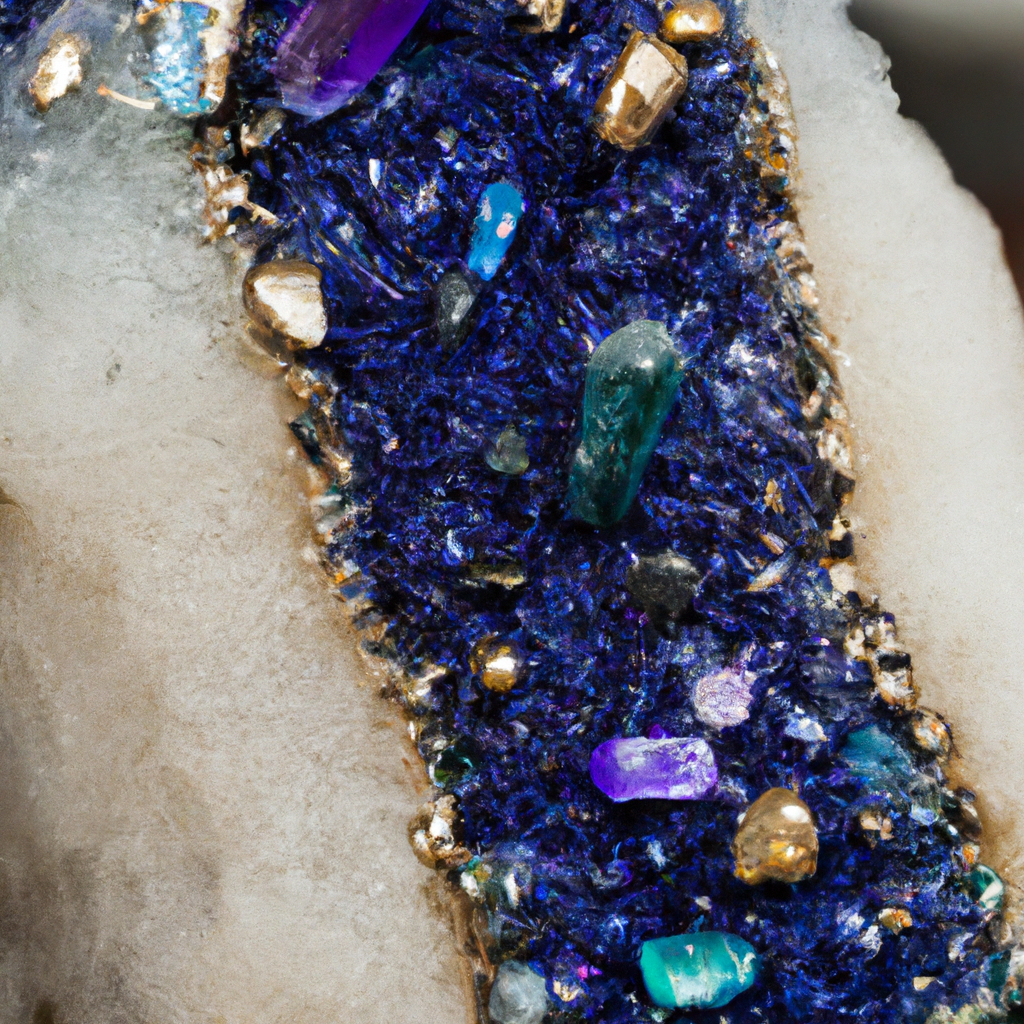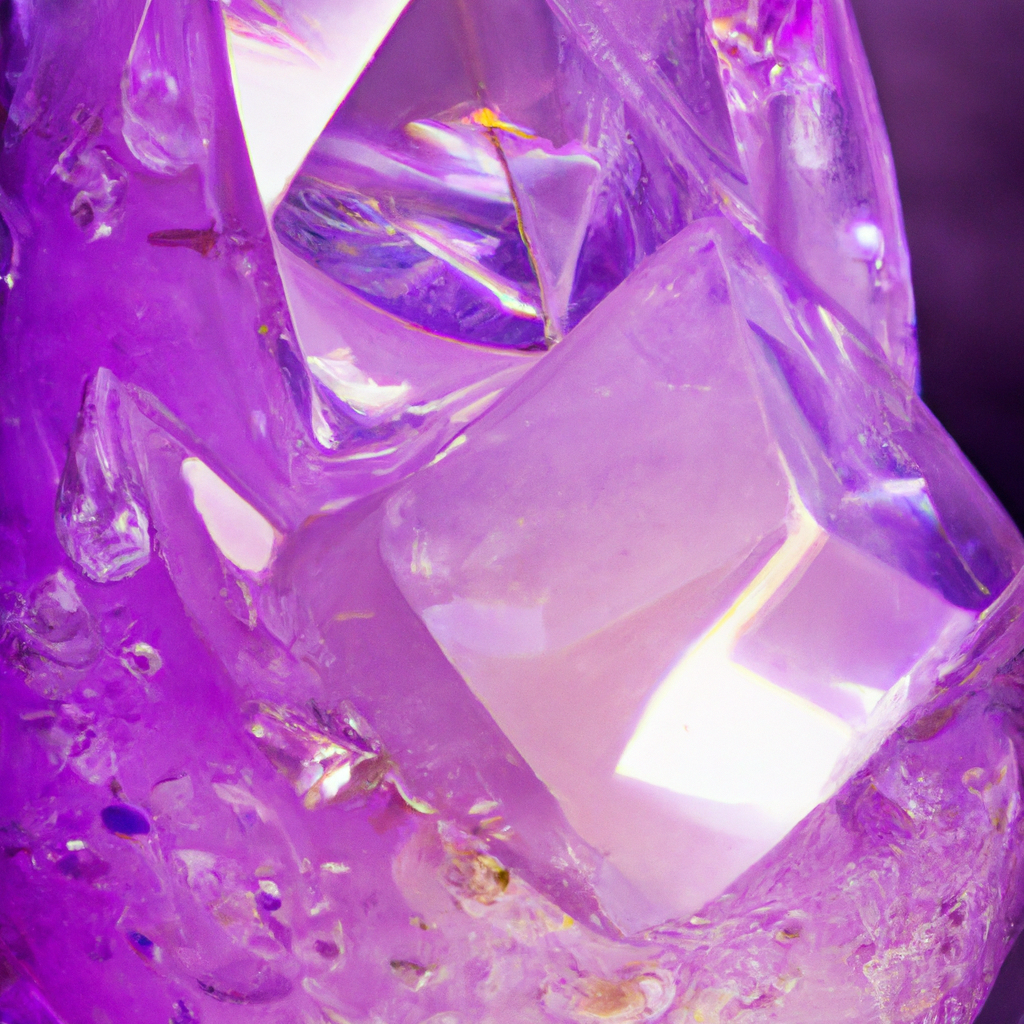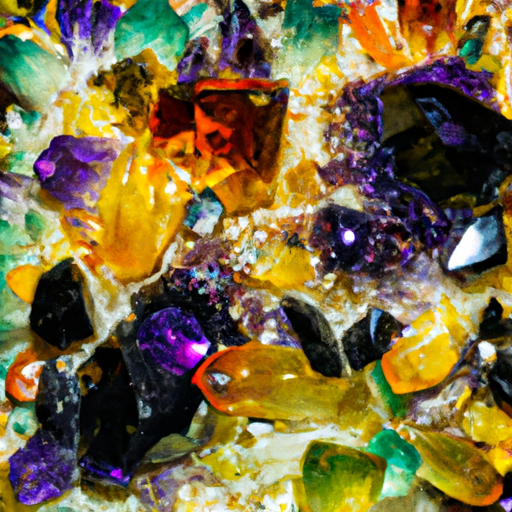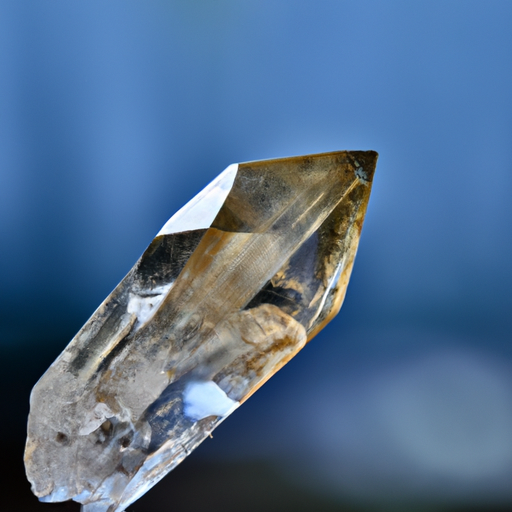In this article, you will explore the fascinating connection between crystals and color therapy. Delving into the relationship between these two elements, we will examine how choosing specific crystals based on their colors can enhance the healing properties of color therapy. The power of crystals and their ability to influence energy fields, combined with the psychological impact of color, makes this exploration a compelling subject. By understanding the correlation between crystals and color therapy, you can unlock a deeper level of healing and well-being in your life.
Understanding the Basics of Crystals and Color Therapy
Crystals are highly sought-after natural formations that have been revered for their beauty and metaphysical properties for centuries. These minerals are believed to possess unique energies and vibrations that can support healing and promote wellbeing. Color therapy, on the other hand, is a holistic approach to health and wellness that utilizes different colors to balance and harmonize the body, mind, and spirit. By combining the power of crystals and color therapy, individuals can enhance their overall wellbeing and achieve a sense of inner balance and harmony.
Defining crystals
Crystals are solid materials that are formed through the repeated arrangement of atoms or molecules in an orderly pattern. They come in various shapes, sizes, and colors, and each crystal possesses its own unique energetic properties. From the dazzling beauty of amethyst to the soothing energy of rose quartz, crystals have captivated humans for their aesthetic qualities as well as their purported ability to heal and restore balance.
Understanding how crystals work
Crystals are believed to work by interacting with the energy systems of the body, such as the chakras, meridians, and aura. Each crystal has a specific vibrational frequency that resonates with certain aspects of the human energy field. When in close proximity to the body, the crystal’s energy is said to influence and harmonize the energy centers, promoting balance and overall wellbeing. This process is often referred to as crystal healing.
Introduction to color therapy
Color therapy, also known as chromotherapy, is a healing modality that dates back thousands of years. It is based on the belief that different colors have specific vibrations and frequencies that can impact our physical, emotional, and spiritual well-being. By using color as a tool, individuals can tap into the energy of different hues to facilitate healing, balance, and personal growth.
Principles and methods of color therapy
There are various principles and methods that form the basis of color therapy. One principle is the idea that each color corresponds to a specific energy center in the body known as a chakra. By working with the colors associated with each chakra, individuals can balance their energy and promote overall wellness. Another method of color therapy involves using colored lights, filters, or fabrics to bathe the body in different hues, stimulating the energy centers and promoting healing.
Historical Context of Crystals and Color Therapy
Historical use of crystals in healing
The use of crystals for healing purposes can be traced back to ancient civilizations such as the Egyptians, Greeks, and Chinese. These cultures believed that crystals possessed spiritual and metaphysical properties that could aid in healing, protection, and spiritual growth. Crystals were often used as amulets or talismans, worn or carried to ward off negative energy and illness. In addition, crystals were used in sacred rituals and ceremonies to connect with the divine and promote spiritual transformation.
Origins of color therapy and chromotherapy
The origins of color therapy can be traced back to ancient Egypt, where color was used in healing temples and art. Egyptian priests recognized the therapeutic properties of different colors and used them to treat various ailments. The ancient Greeks and Romans also incorporated color in their healing practices, recognizing the effects of light and color on the body and mind. Over time, color therapy evolved and gained prominence in different cultures, including India and China, where it became an integral part of traditional medicine systems such as Ayurveda and Traditional Chinese Medicine (TCM).
Famous figures in history who used crystals and color therapy
Throughout history, many famous figures have been known to use crystals and color therapy for their healing benefits. For instance, Cleopatra, the Egyptian queen, was said to have worn crystals such as lapis lazuli and turquoise for their protective and spiritual properties. Similarly, renowned physicist Sir Isaac Newton believed in the therapeutic effects of color and used colored light to treat various health conditions. Other notable individuals who embraced crystals and color therapy include Edgar Cayce, a renowned American mystic and healer, and Rudolf Steiner, the founder of Anthroposophy, a holistic spiritual philosophy.

Relation between Crystals and Different Colors
Explanation of crystal colors
Each crystal possesses a unique color, ranging from transparent and colorless to vibrant and bold. The color of a crystal is determined by various factors, such as impurities in the crystal lattice or the presence of specific minerals. For example, amethyst is known for its purple hue, which is caused by traces of iron and aluminum in the crystal structure. Rose quartz, on the other hand, gets its delicate pink color from traces of titanium, iron, or manganese.
How colors resonate with different crystals
It is believed that different colors have specific vibrational frequencies that resonate with certain crystals. For example, the color green is associated with the heart chakra, which governs love, compassion, and emotional healing. Crystals such as emerald and rose quartz, which are green and pink respectively, are often used to balance and energize the heart chakra. Similarly, the color blue is associated with the throat chakra, which governs communication and self-expression. Crystals such as lapis lazuli and blue lace agate, which are blue in color, are believed to enhance the throat chakra’s energy and promote clear and authentic communication.
Crystals and chakra colors
The chakra system is an ancient concept that originated in India and is widely used in energy healing practices. Chakras are spinning wheels of energy located along the central axis of the body, and each chakra is associated with a specific color. By working with crystals of corresponding colors, individuals can balance and activate their chakras, promoting overall health and wellbeing. For example, the root chakra, which is associated with stability and grounding, is represented by the color red. Crystals such as red jasper and garnet, which are red in color, can be used to support the root chakra’s energy.
Science behind Crystals and Color Therapy
Scientific acceptance and skepticism of crystal and color therapy
While the use of crystals and color therapy has gained popularity among holistic health practitioners and enthusiasts, there is a range of scientific acceptance and skepticism surrounding these practices. Some scientific studies have explored the effects of color on human physiology, psychology, and emotional well-being, providing some evidence to support the efficacy of color therapy. However, it is important to note that more research is needed to fully understand and validate the mechanisms behind crystal and color therapy.
Physiological responses to colors and crystals
Research suggests that exposure to different colors can elicit physiological responses in the body. For example, studies have shown that the color blue has a calming effect on heart rate and blood pressure, while the color red can increase heart rate and stimulate the nervous system. Similarly, certain crystals have been found to possess piezoelectric properties, meaning they can generate an electric charge in response to mechanical stress. It is believed that this electrical charge may impact the bioelectrical field of the body, influencing physiological processes.
Psychological effects of color and crystal therapy
The psychological effects of color and crystal therapy are often subjective and vary from individual to individual. Some people report feeling a sense of calm and relaxation when surrounded by certain colors or when working with specific crystals. Others may experience an uplift in mood or enhanced creativity. These psychological effects may be attributed to the individual’s personal experiences, beliefs, and associations with specific colors and crystals.

Benefits of Using Crystals in Color Therapy
Physical benefits of crystal and color therapy
Crystal and color therapy are believed to provide a range of physical benefits. For example, the color green, associated with the heart chakra, is believed to support cardiovascular health and alleviate physical ailments related to the heart and lungs. Crystals such as malachite and aventurine, which are green in color, are often used to promote physical healing and balance. Additionally, crystals can be used in massage therapy or placed directly on the body to support pain management and reduce inflammation.
Emotional and psychological benefits
Color therapy can have profound emotional and psychological benefits. Different colors are believed to evoke specific emotions and moods. For example, the color yellow is associated with joy, optimism, and mental clarity, while the color pink is associated with love, compassion, and emotional healing. By working with these colors, individuals can tap into their emotional and psychological well-being, promoting balance and self-expression.
Improvement in energy and mood
Crystals and color therapy are believed to have a direct impact on an individual’s energy and mood. Many people report feeling more balanced, uplifted, and energized after working with crystals and colors. This may be attributed to the ability of crystals and colors to recalibrate and harmonize the body’s energy centers, leading to an overall improvement in well-being. By aligning the energy centers, individuals may experience improved vitality and a greater sense of inner peace.
Supporting mental clarity and spiritual growth
Crystal and color therapy can also support mental clarity and spiritual growth. By working with specific crystals and colors, individuals can enhance their focus, concentration, and intuition. For example, crystals such as amethyst and clear quartz are believed to enhance clarity of thought and spiritual insight. The use of color in meditation or visualization exercises can also deepen the connection with one’s inner self and promote spiritual growth.
Specific Crystals and Their Corresponding Colors
Amethyst and purple
Amethyst, a popular crystal, is often associated with spiritual growth, intuition, and protection. Its vibrant purple color reflects its connection to the crown chakra, which is the gateway to higher consciousness and spiritual enlightenment. Amethyst is believed to enhance spiritual insight, promote relaxation, and aid in meditation.
Rose quartz and pink
Rose quartz, with its gentle pink hue, is known as the stone of love and compassion. It is often associated with the heart chakra and is believed to promote emotional healing, self-love, and forgiveness. Rose quartz can be used to attract love, enhance relationships, and promote a sense of peace and harmony.
Citrine and yellow
Citrine is a vibrant yellow crystal that is associated with abundance, joy, and self-confidence. It is believed to stimulate the solar plexus chakra, which governs personal power and willpower. Citrine is often used to enhance creativity, boost self-esteem, and attract wealth and success.
Malachite and green
Malachite is a striking green crystal that is associated with healing, transformation, and protection. It is believed to resonate with the heart chakra, supporting emotional healing and balance. Malachite can also be used to promote physical healing, particularly in the areas of the heart and immune system.
Lapis lazuli and blue
Lapis lazuli is a deep blue crystal that is associated with wisdom, clarity, and spiritual insight. It is often used to stimulate the third eye chakra, which governs intuition and inner vision. Lapis lazuli is believed to enhance spiritual growth, deepen meditation practice, and promote mental clarity.
Practical Ways to Combine Crystals and Colors Therapy
Creating a therapeutic environment with crystals and colors
One practical way to incorporate crystals and colors in your daily life is by creating a therapeutic environment in your living space. You can strategically place crystals of different colors throughout your home to bring in their corresponding energies. For example, you can place amethyst near your bed to promote restful sleep and enhance your spiritual practice. You can also hang colorful curtains or use colored lighting to create a soothing and uplifting ambiance.
Incorporating crystals and colors in meditation
Meditation is a powerful practice that can be enhanced by incorporating crystals and colors. You can choose a crystal that resonates with your intention for the meditation session and place it in front of you. As you close your eyes and begin to breathe deeply, visualize the color associated with the crystal infusing your entire being. Allow the color’s energy to flow through you, promoting relaxation, clarity, and spiritual connection.
Wearing crystals and colors for personal therapy
Another practical way to utilize crystals and colors for personal therapy is by wearing them as jewelry or carrying them in your pocket. You can select a crystal that aligns with your current needs or intentions and wear it as a pendant, bracelet, or ring. Not only will you benefit from the crystal’s energetic properties, but you will also have a constant reminder of your intention throughout the day. Additionally, you can wear clothing or accessories in specific colors that resonate with your desired energy or mood.
Color Therapy: Crystals for Each Chakra
Red crystals for the root chakra
The root chakra, located at the base of the spine, is associated with stability, grounding, and physical vitality. Red crystals such as red jasper, garnet, and ruby can be used to support and balance the root chakra. These crystals are believed to enhance feelings of safety, stability, and physical strength.
Orange crystals for the sacral chakra
The sacral chakra, located below the navel, is associated with creativity, sensuality, and emotional well-being. Orange crystals such as carnelian, orange calcite, and sunstone can be used to stimulate and balance the sacral chakra. These crystals are believed to enhance creativity, boost self-expression, and promote emotional healing.
Yellow crystals for the solar plexus chakra
The solar plexus chakra, located above the navel, is associated with personal power, confidence, and self-esteem. Yellow crystals such as citrine, yellow jasper, and golden topaz can be used to activate and balance the solar plexus chakra. These crystals are believed to enhance personal power, boost self-confidence, and promote abundance and prosperity.
Green crystals for the heart chakra
The heart chakra, located in the center of the chest, is associated with love, compassion, and emotional healing. Green crystals such as rose quartz, malachite, and green aventurine can be used to support and balance the heart chakra. These crystals are believed to enhance feelings of love, promote emotional healing, and foster harmonious relationships.
Blue crystals for the throat chakra
The throat chakra, located in the throat area, is associated with communication, self-expression, and authenticity. Blue crystals such as lapis lazuli, blue lace agate, and aquamarine can be used to stimulate and balance the throat chakra. These crystals are believed to enhance clear and effective communication, promote self-expression, and encourage authenticity.
Indigo crystals for the third eye chakra
The third eye chakra, located between the eyebrows, is associated with intuition, inner vision, and spiritual insight. Indigo crystals such as amethyst, lapis lazuli, and sodalite can be used to activate and balance the third eye chakra. These crystals are believed to enhance intuition, promote spiritual growth, and stimulate profound insights.
Violet crystals for the crown chakra
The crown chakra, located at the top of the head, is associated with spiritual connection, higher consciousness, and universal wisdom. Violet crystals such as amethyst, sugilite, and charoite can be used to support and balance the crown chakra. These crystals are believed to enhance spiritual connection, promote divine guidance, and facilitate the expansion of consciousness.
Precautions and Considerations in Applying Crystal and Color Therapy
Understanding contraindications
While crystal and color therapy are generally safe and non-invasive practices, it is important to be aware of any contraindications or precautions. Some individuals may be more sensitive to certain colors or crystals, and excessive exposure or use may cause discomfort or energetic imbalances. Additionally, certain crystals may contain trace elements or minerals that can be toxic or cause allergic reactions. It is recommended to consult with a knowledgeable practitioner or do thorough research before using crystals and colors for therapeutic purposes.
Keeping expectations realistic
Crystal and color therapy should be approached with realistic expectations. While many individuals have reported positive experiences and benefits from these practices, results may vary, and it is not a substitute for medical or psychological treatment. It is important to view crystal and color therapy as complementary to conventional approaches and to seek professional guidance when necessary.
Getting advice from a professional healer
If you are new to crystal and color therapy or have specific health concerns, it is beneficial to seek advice from a professional healer or therapist who specializes in these modalities. A trained practitioner can guide you in selecting the appropriate crystals and colors, as well as provide personalized recommendations tailored to your needs and goals. They can also ensure that you are using crystals and colors safely and effectively, taking into account your unique circumstances and sensitivities.
Future Research Directions for Crystal and Color Therapy
Ongoing research in crystal and color therapy
While crystal and color therapy have been practiced for centuries, there is still much to explore and understand in terms of their mechanisms and effectiveness. Ongoing research is being conducted to explore the physiological, psychological, and energetic aspects of crystal and color therapy. Current studies are examining the effects of specific colors and crystals on various health conditions, as well as the potential use of these therapies in integrative and complementary medicine.
Potential for integrative and complementary medicine
Crystal and color therapy have the potential to be integrated into mainstream healthcare as complementary approaches. As more research is conducted and evidence is accumulated, these therapies may find their place alongside conventional treatments, offering additional options for individuals seeking holistic and multidimensional approaches to health and wellness.
Predictions and trends in crystal and color therapy
Given the increasing interest in alternative and holistic healing modalities, crystal and color therapy are likely to continue gaining popularity. As more individuals become aware of the potential benefits of these therapies, the demand for knowledgeable practitioners and quality resources is likely to grow. In addition, advancements in technology may pave the way for new applications, such as the use of LED lights and wearable devices that emit specific colors for therapeutic purposes.
In conclusion, the relationship between crystals and color therapy is a fascinating interplay between the natural world and the human energy system. Both crystals and colors have been revered for their healing properties throughout history, and their integration into complementary therapies is gaining recognition. By understanding the basics of crystals and color therapy, exploring their historical context, and recognizing the science behind their effects, individuals can harness the power of these modalities to promote physical, emotional, and spiritual wellbeing. Whether it is through wearing crystals, creating a therapeutic environment, or incorporating color into meditation, the benefits of crystals and color therapy are within reach for anyone seeking a holistic approach to health and wellness.



